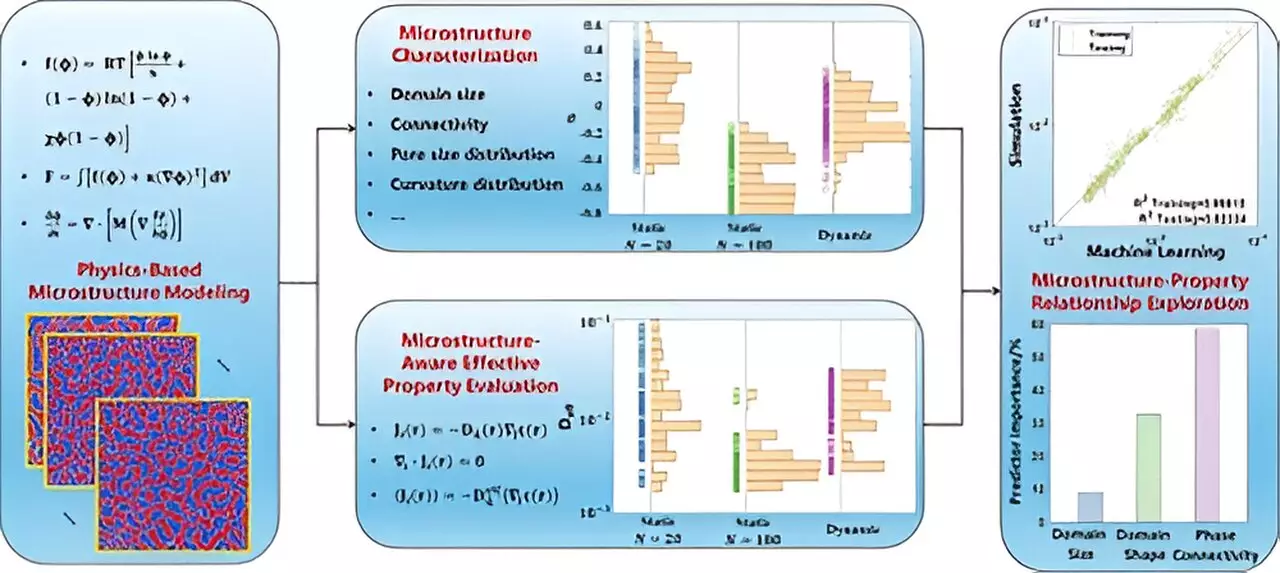In the field of material science, understanding the correlation between microstructure characteristics and their resultant properties is pivotal. This understanding not only enhances the performance of existing materials but also catalyzes the innovation of next-generation structural and functional materials. However, unraveling this relationship presents numerous challenges. Researchers at Lawrence Livermore National Laboratory (LLNL) have begun to tackle these complexities by developing a sophisticated computational framework aimed at investigating porous microstructures and their associated properties.
Published in the esteemed journal *ACS Applied Materials & Interfaces*, the groundbreaking research conducted by LLNL scientists encompasses an integrated computational framework that synergizes multiple methodologies. “We have developed an integrated computational framework which incorporates physics-based microstructure modeling, microstructure feature extraction, microstructure-aware effective property evaluation and machine-learning analysis tools,” explained Longsheng Feng, a leading scientist in the study. This multifaceted approach is designed to enhance our understanding of porous materials, particularly those based on polymers, by allowing researchers to meticulously analyze how various microstructure features—such as domain size and pore size distribution—affect material behavior.
The research team utilized polymer-based porous materials as a model system to validate their framework, focusing on how polymerization dynamics influence essential microstructural features. The implications of this work are profound; as the dynamics of polymer growth can lead to varied structural attributes, it is vital to comprehend how these attributes affect transport properties. This opens new avenues for the design and processing of materials tailored to specific applications.
Longsheng Feng highlights the objective of this integrated approach: to not just grasp the formation mechanisms of microstructures through physics-based evaluations but also to identify which features are responsible for varying material properties. The ability to link specific microstructural traits with their effects on the properties is crucial for innovations in material design.
As indicated by co-author Tae Wook Heo, the ultimate goal is to furnish a robust framework that elucidates the connection between microstructure and properties—one that can guide the targeted design of materials for particular uses, such as advanced membranes. Juergen Biener, another co-author, emphasizes the practical implications of this research, stating that a deeper understanding of microstructure-property relationships can influence processing techniques necessary for achieving desired material characteristics.
The initiative led by LLNL scientists signifies a significant stride toward advancing material science. By leveraging computational modeling, feature extraction, and machine learning, this research paves the way for the development of tailored materials that meet specific performance criteria. As the drive toward high-performance polymers and advanced materials accelerates, frameworks such as this will be indispensable in navigating the complexities of microstructure characterization and optimization, ultimately leading to innovative solutions across various industrial applications.

